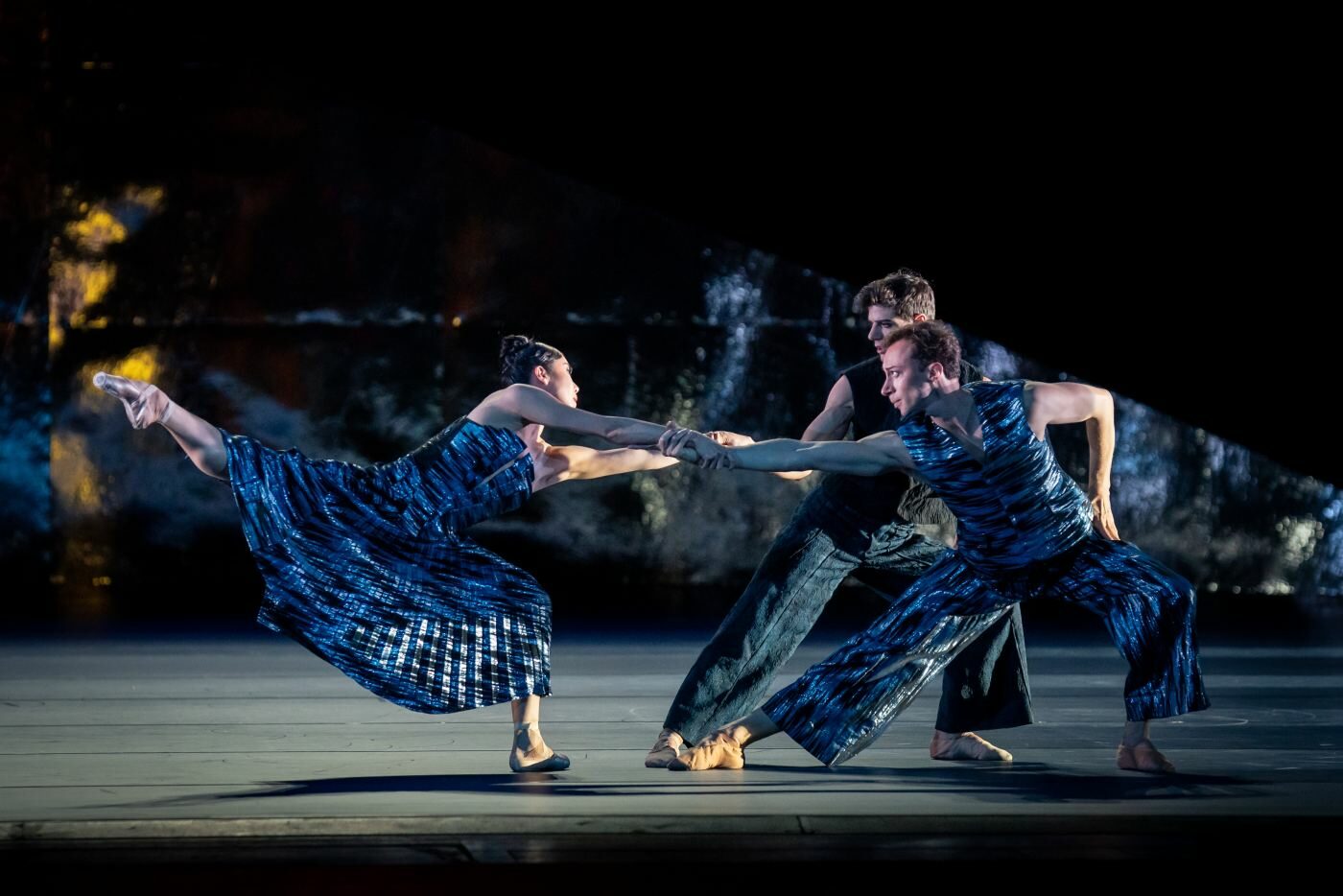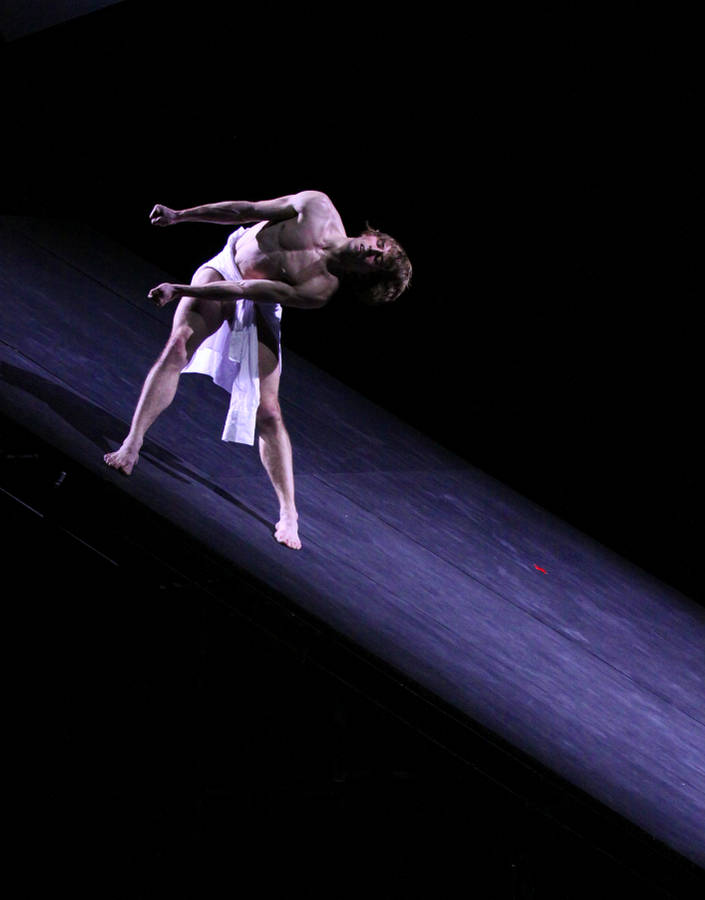A Real Man
“Liliom”
Hamburg Ballet – John Neumeier
Hamburg State Opera
Hamburg, Germany
January 31, 2015
by Ilona Landgraf
Copyright © 2015 by Ilona Landgraf
 “By the way we have to see how Dortmund played” a tall, athletic man said to his female companion when walking into Hamburg State Opera’s auditorium in front of me. Saturdays are usually match days in the German Bundesliga. “Dortmund”, or “Borussia Dortmund” respectively, was obviously the man’s favorite club in the top tier of the German football league system. His companion, slightly annoyed, looked heavenwards. But after all she had made her football addict friend accompany her to a ballet evening. Maybe John Neumeier’s “Liliom” was exactly the right choice to stir his cultural enthusiasm.
“By the way we have to see how Dortmund played” a tall, athletic man said to his female companion when walking into Hamburg State Opera’s auditorium in front of me. Saturdays are usually match days in the German Bundesliga. “Dortmund”, or “Borussia Dortmund” respectively, was obviously the man’s favorite club in the top tier of the German football league system. His companion, slightly annoyed, looked heavenwards. But after all she had made her football addict friend accompany her to a ballet evening. Maybe John Neumeier’s “Liliom” was exactly the right choice to stir his cultural enthusiasm.
At least on first sight, its titular character Liliom fits perfectly into the cliche of a real man. He is a womanizer with plenty of brawn. Talking isn’t his forte. Worse, looking closer, Liliom turns out to be a good for nothing dude. When not knowing how to deal with a situation, when feeling helpless, he can’t stop himself from striking out. He is likewise quick to pull a knife, a macho man with a limited range of action alternatives who avoids at any cost exposing his innermost self. (more…)


